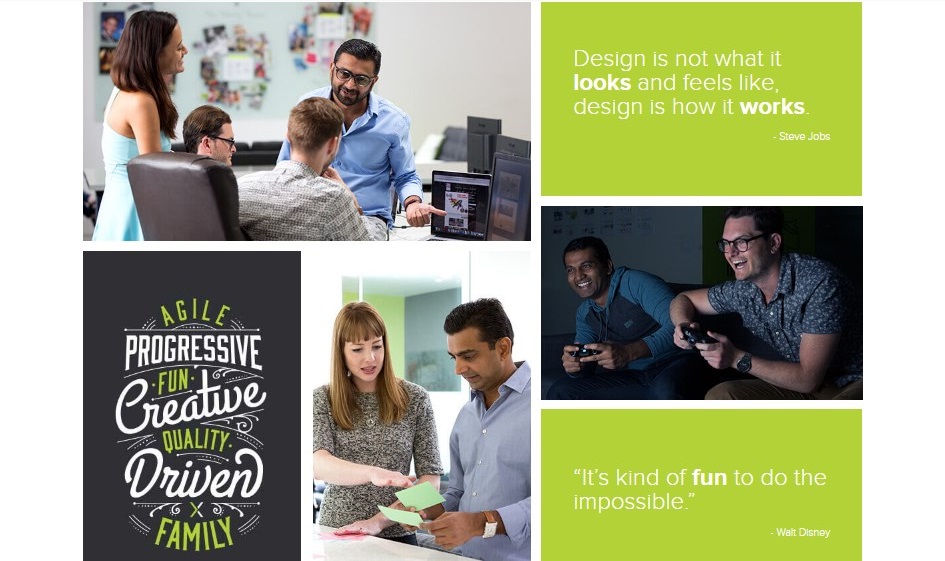
The trend toward greater personalization has grown in the last year and so has the technology to make it happen. To maintain a base of loyal customers, a brand must show that it’s listening to user actions and behaviors and adapting according to that information.

Unfortunately,
The lag time it takes to process data and make these changes can result in losing the customer, and predictive solutions can often be a hindrance.
Real-time UX personalization and contextually based interactions can help improve a company’s efforts to cater to modern consumers.
A business must understand the importance of content personalization and use current products to allow their apps to respond immediately to context and instantly deliver what consumers want.
Understanding the Need
App creators have access to a plethora of data giving them insights into how they might further develop their apps to adapt to the user’s context.
By making use of data that smartphones already collect,
These creators can customize the experience, demonstrating to their user base that the app gives the customer actual value. As so many companies and developers enter the market, this customization becomes exceptionally important, convincing users to ignore the noisy market of look-alike apps vying for their attention.
This app competition serves the users because it compels companies to create value to keep their business. Competition means apps need to be faster and more seamless in their integration into users’ lives. They must also be adaptable to varying customer needs. With all the competition clamoring for customer attention, an app needs to deliver the message the customers want to hear.
Keep It Simple

Keep it simple and clean User Interface
This concept may seem complicated, but it really isn’t. An app doesn’t need to literally read the users’ minds – just seem to do so. The benefit to the user and the company providing the service hinges on how seamlessly suggestions and features can be implemented.
When users are going about their day, a company’s app should use what resources it possesses to give the users something that benefits them.
For example,
A coupon to a local grocery store displayed by a notification when the phone’s location data indicates a user entering the store’s parking lot can be a boon to business, and it’s not complicated.
Designing Contextual Personalization
Industry professionals call this data context. It gives the program the information it needs to deliver something customized to the user. It also allows the app to change that item or send a new one if the data changes. That kind of adaptability tells users that the app values the customers’ time and wants to help them in a way specific to them.
Understanding this kind of customization may be easy to grasp but that does not make it simple to achieve. Coding real-time personalization increases the complexity of an app’s development, increasing the costs and time to deliver.
Some companies now specialize in acquiring information from all possible sources and routing that data to the companies needing that information to personalize their apps.
Should an App Adapt
Not all apps need to customize the experience for users to the levels described here. The businesses that benefit the most from providing their customers the kind of real-time personalization are mainly retail, financial, and hospitality companies. Here’s a breakdown of each:
1. Retail

These companies thrive on providing their customers with one thing: filling wants and needs. These shifts constantly, depend on context and vary from customer to customer.
Factors outside of the companies’ control can change how a customer acts in a store or on a retailer’s website. A cold front might compel them to buy a sweater. A new job may require a professional bag.
In these cases,
An app that can adapt to available data, tipping the software off to a sudden change in customer actions, could mean the difference between a sale and a lost customer.
If the app interfaces with a weather service and detects a sudden cold front moving in, it could deliver discounts on warm clothing like sweaters or coats when a customer enters the store or while the customer sits on the couch looking at the app watching the news.
What if a customer is perusing flights and hotels and an app delivers discounts on seasonally appropriate travel items for the destination, like sunglasses, swimsuits, ski jackets, or more? The app just demonstrated the ability to quickly adapt to behavior, showing the user value by communicating that the app values the customer’s time and wants to provide more value as a result.
2. Financial

Most people consider apps from a bank or other financial institution as a functional tool that gives them known value in convenience managing finances.
Now,
what if that app also keeps track of other aspects of a customer’s financial situation, like car insurance? The USAA app provides a great example of an app that could provide real-time customizable experiences for a user based on what information the app already has while merging that data with other available information.
Imagine this situation;
The app accesses location data and determines that a user is at a bank and may need transportation. An ad for Uber or a taxi appears in the app, offering the user a discount.
Even if the customer does not use the coupon,
The fact that the app offered the user a service they might have used tells them the financial company values more than the just financial patronage of their establishment.
Another example could provide the customer with a coupon for tax services as the new year dawns, either internally or through a partner service. The customer sees the app offering a seasonal discount right when they are likely to be seeking such services.
3. Hospitality

Anyone who has traveled and stayed at a hotel most likely saw a stand of brochures in the lobby. As they stand there waiting for their turn at the counter, customers see a variety of local activities offering them experiences they might want to use or were looking for, adding value to their stay. This type of service is a prime example of contextual marketing, as you are unlikely to find a helicopter tour of the Grand Canyon while staying in New York City, but very likely to see such offers at hotels in Las Vegas.
A hotel app, with information provided by the user upon registering like favorite foods or activities, can provide specific offers customized to the location.
With an itinerary loaded and location data from the phone, the app can deliver personalized ads when the user approaches a specific location, like Uber or Lyft when the user’s plane lands at a destination.
Real-time contextual personalization offers a company or developer the opportunity to directly communicate to users or customers by offering them something they might use.
This kind of adaptability signals the company values the users and wants to make their experience as beneficial as possible. Done correctly, users will flock to the app, as their interactions steadily improve the app’s ability to give them more value.
This interaction increases app to use and the likelihood the users will tell others about it. This gives a company something very valuable in return: a dedicated salesforce they don’t have to pay, one that is interested because they feel valued. It’s a win/win situation for both parties and another step forward in business to consumer efficiency.
The post Take User Experience Personalization to the Next Level first appeared on Web Design & Digital Marketing Tips.